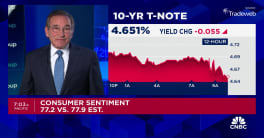Sales of existing homes fell in May, but that decline may have been due to a lack of available homes rather than a lack of demand. According to the National Association of Realtors® (NAR), total existing home sales including single family homes, townhomes, condominiums, and cooperative apartments, declined 1.5 percent to a seasonally adjusted annual rate of 4.55 million in May from 4.62 million in April. Sales were up 9.6 percent from the 4.15 million sales pace in May 2011. The national median existing-home price3 for all housing types rose 7.9 percent to $182,600 in May from a year ago, the third consecutive month of year over year price gains.
The total inventory of homes for sale at the end of May was down 0.4 percent to 2.49 million existing homes, a 6.6 month supply at the current sales pace. One year ago there was a 9.1 month supply and at a cyclical peak in July 2010 the inventory stood at a 12.1 month supply.
Lawrence Yun, NAR chief economist, said inventory shortages in certain areas have been building all year. "The slight pullback in monthly home sales is more likely due to supply constraints rather than softening demand. The normal seasonal upturn in inventory did not occur this spring," he said. "Even with the monthly decline, home sales have moved markedly higher with 11 consecutive months of gains over the same month a year earlier."
Yun said properties in the lower price ranges are in short supply in much of the country outside of the Northeast. Real estate agents in western states have been calling for an expedited process to get additional foreclosed properties on the market to alleviate shortages and much of Florida is in a similar situation.
Sales of single family homes were down 1.0 percent to a seasonally adjusted rate of 4.05 million from 4.09 million in April. This is 10.4 percent above the 3.67 rate of sales one year earlier. Condo and co-op sales were down 5.7 percent to a rate of 500,000 from 530,000 a month earlier but are 4.2 percent higher than a year earlier.
The median price for a single-family home was $182,900, an increase of 7.7 percent from May 2011 while the median condo price saw an annual increase of 8.8 percent to a median of $180,000. "Some of the price gain results from a shrinking share of distressed homes in the sales mix," Yun explained.
Foreclosures accounted for 15 percent of sales in May and short sales for 10 percent. This 25 percent share is down from 28 percent in April and 31 percent in May 2011. Foreclosures sold for an average discount of 19 percent below market value in May, while short sales were discounted 14 percent.
First-time buyers accounted for 34 percent of purchases, down from 35 percent in April and 26 percent in May 2011. Investors purchased 17 percent of homes, down from 20 percent in April and 19 percent a year earlier. All-cash sales represented 28 percent of transactions compared to 29 percent and 30 percent in the earlier periods.
NAR President Moe Veissi said there are reports of multiple offers and quick sales in areas with a tight supply of housing and of competition between first-time buyers and cash investors. He advised buyers to continue to perform due diligence and make offers with appropriate contingencies as they would in a more balanced market.
Regionally, existing-home sales in the Northeast fell 4.8 percent to an annual level of 590,000 in May but are 7.3 percent higher than May 2011. The median price in the Northeast was $250,700, up 3.8 percent from a year ago.
Midwest sales rose 1.0 percent to a pace of 1.04 million, 9.5 percent above a year ago. The median price in the Midwest was $147,700, up 6.4 percent from May 2011.
Sales in the South were down 0.6 percent to an annual level of 1.78 million but are 9.2 percent higher May 2011. The median price in the South was $159,700, up 7.8 percent from a year ago.
Existing-home sales in the West declined 3.4 percent to an annual pace of 1.14 million in May but are 3.6 percent above a year ago. The median price in the West was $233,900, up 13.4 percent from May 2011. "The sharp price increase in the West results largely from more sales at the upper end of the market," Yun explained.







